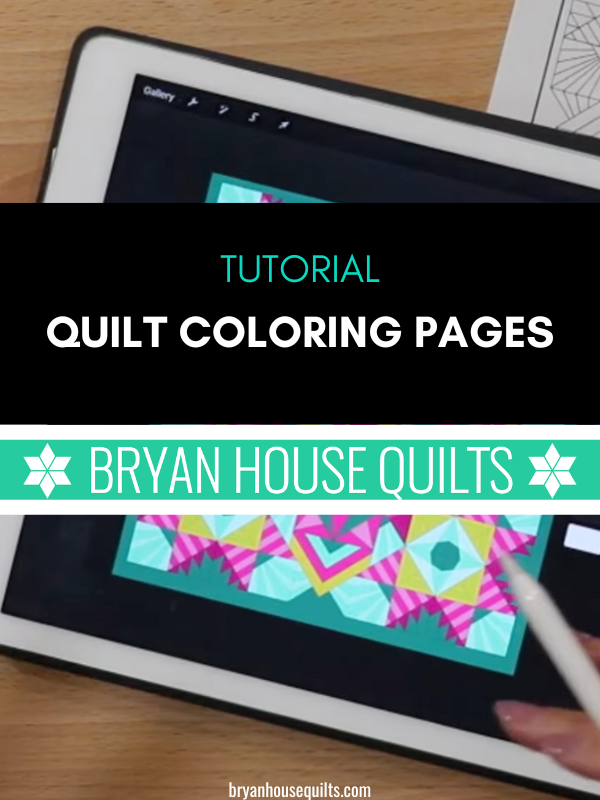
Quilt coloring pages are a fun part of planning your project. Especially if you’re putting your own twist on a designer’s pattern. It’s like peering into a crystal ball for your quilt’s future!
Today I’m sharing four ways to use them and plan your project. Plus, a video tutorial on Procreate – the app I use for coloring pages. When I say use them, I really mean PLAY with them!
Not just for coloring. They do quadruple duty by helping you:
- Create your quilt’s color palette,
- Make safe mistakes early in the process,
- Become familiar with quilting patterns before cutting and sewing,
- Try out quilting ideas before stitching the top.
Coloring pages are black line drawings on a white background (like coloring books) in a PDF printable format or a digital format for apps like Procreate.
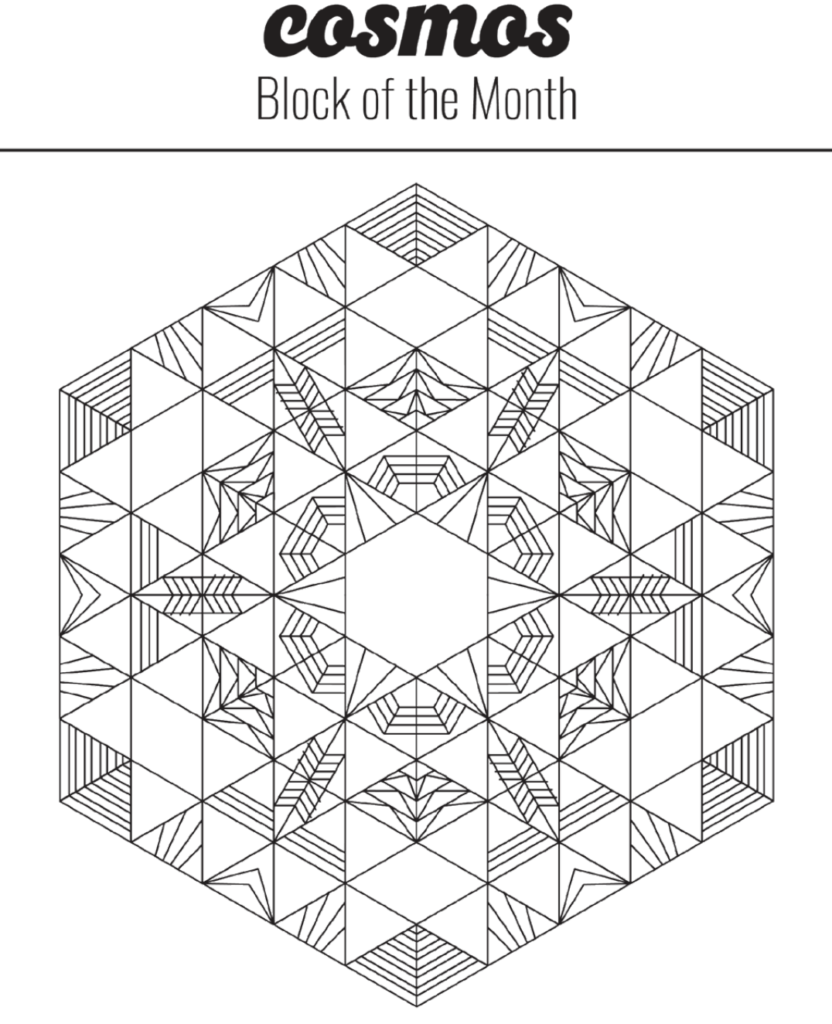

Make a modern triangle in my free class and learn the magic of Freezer Paper Piecing! Download the free pattern and I’ll walk you step-by-step through the technique. Get started here!
Download and Upload Quilt Coloring Page Formats
Many of my quilt patterns include coloring pages in a PDF file to download and color, and a PNG file to upload into Procreate.
The quilt pattern blocks are drawn as black lines on a white background – the overall design and block details. You’ll know your quilts better before you making them with coloring pages.
EASY START: Steps and Techniques
Download: Quilt Pattern PDF
- Click on the icon and the files are automatically sent to your Downloads folder unless you give it a new place to land, like your Desktop. Move the PDF to your Desktop (click and drag) or a digital file folder where you keep your quilt patterns.
Print: Coloring Page
- NOTE: If you click on the PDF file icon while still in your Downloads file, it might open the file in Preview mode and may not print. So always move it to a file folder first before printing.
- Make two to five copies on white copy paper.
Enlarge, Divide or Both
- Enlarge the page by 10% if you’d like more room to color.
- Color ¼ of the quilt pattern design by dividing it into quadrants. After coloring one section, make three copies, cut them out and piece all four back together. Kind of like a crystal ball.
Four Ways to TO USE Quilt COLORING PAGES
First, play time!
1. Create your quilt pattern color palette.
Have fun – let your creativity out. I create my palette by playing with fabric color chips or paint chips. Starting with two or three colors simplifies the process because I fill in with tints and shades of those three colors to round out the palette.
Another approach to try is picking several color combinations for auditions. Compare and choose among those to finalize your palette. Then tell your chosen palette, “You won! You got the starring role in my quilt!”
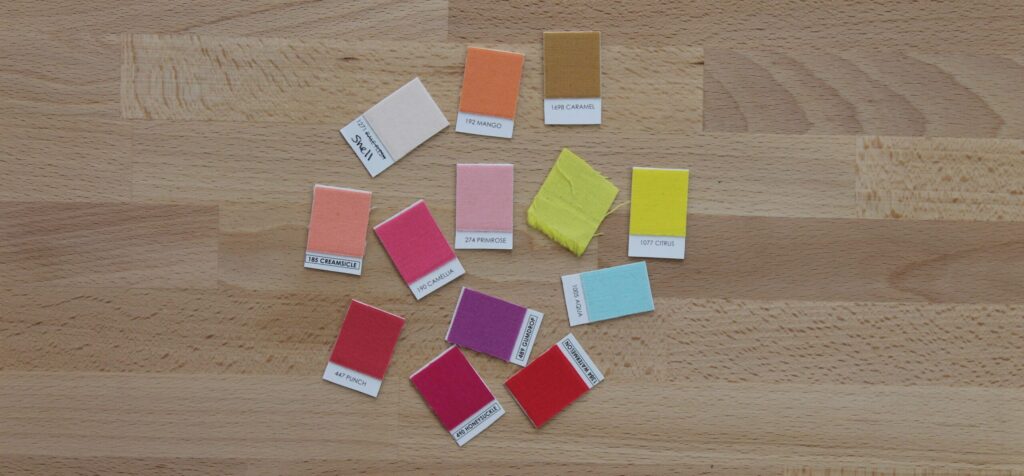
You can do the same thing by filling in colors on the page’s backside using colored pencils, crayons or markers.
Then fill in more swatches. Try blending colors with cross hatching and layering. This works well with colored pencils.
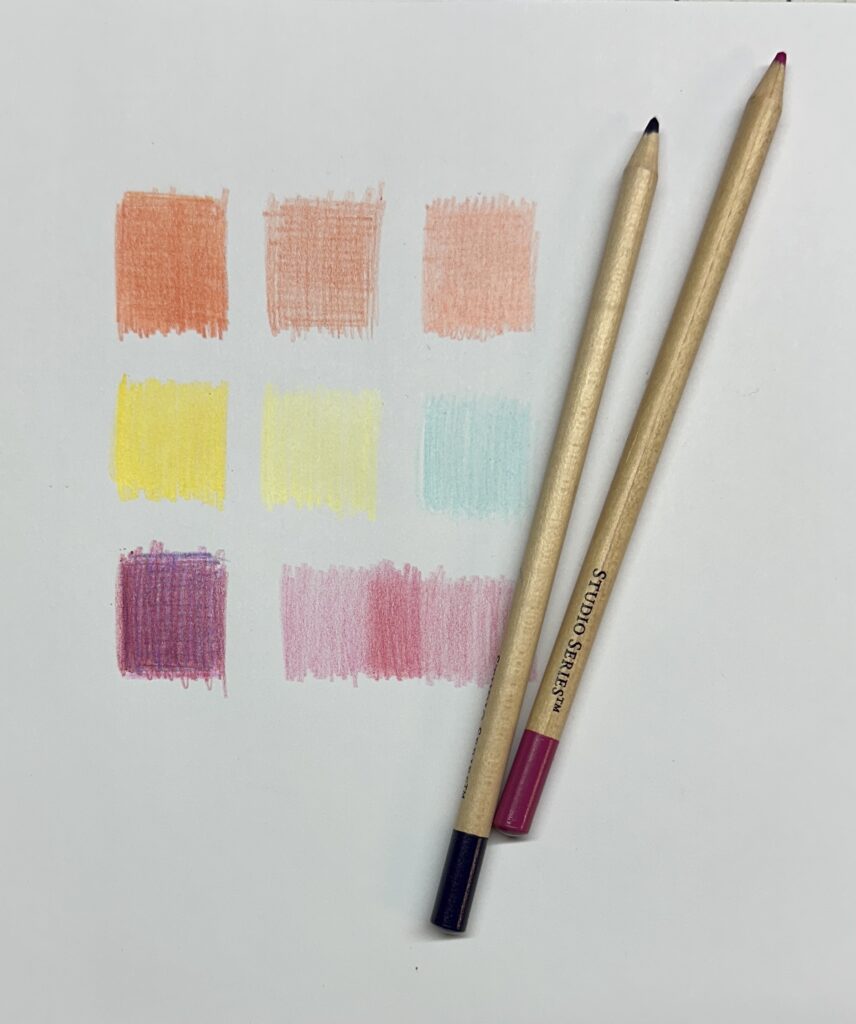
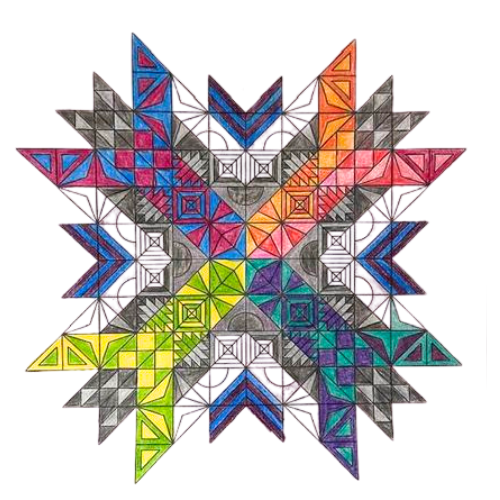

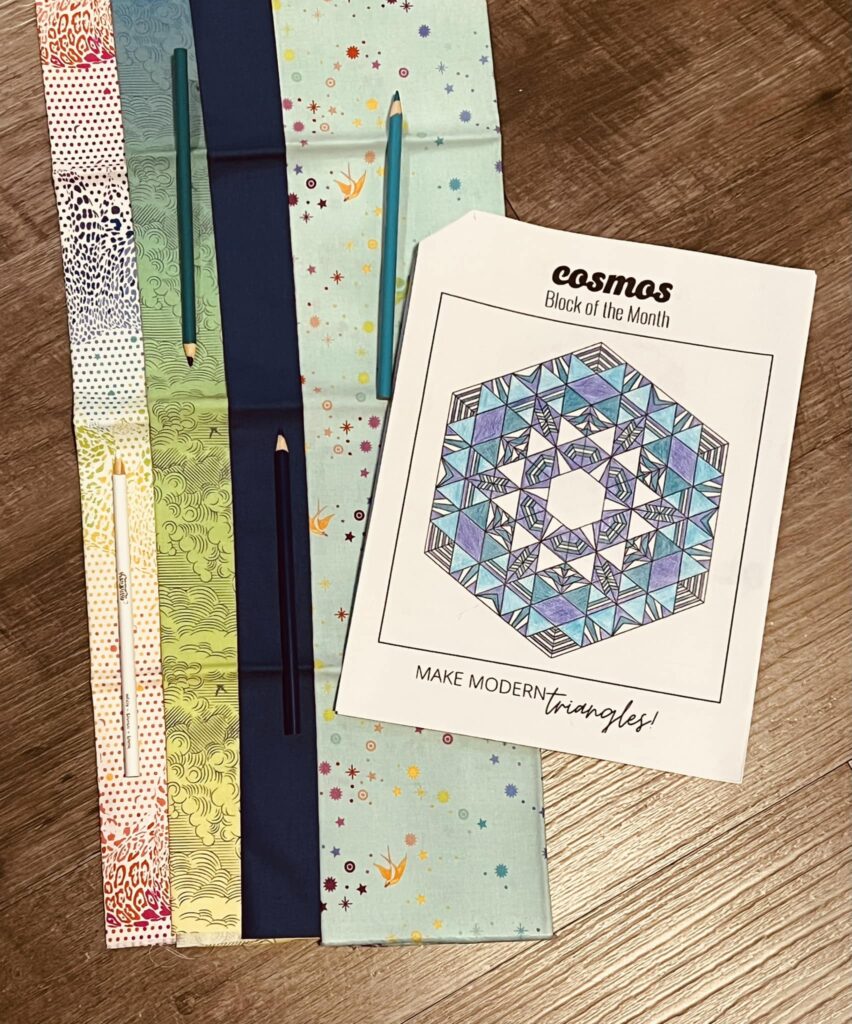
Procreate App Option
Try out colors in digital quilt coloring pages with Procreate, a digital app that works on an iPad and iPhone (Android version unavailable). Upload the PNG file into the app and start placing colors into the shapes by tapping with an Apple pencil or your finger. The app is popular and only available on Apple mobile devices in the Apple App store. Other apps to try that work on Android devices include EQ8, DrawPaint, Pigment, Inkscape and Microsoft Paint.




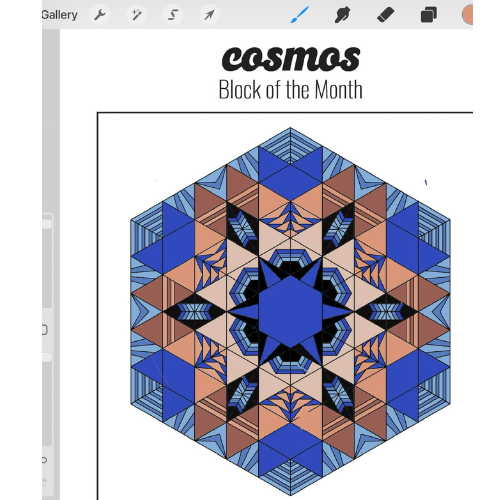
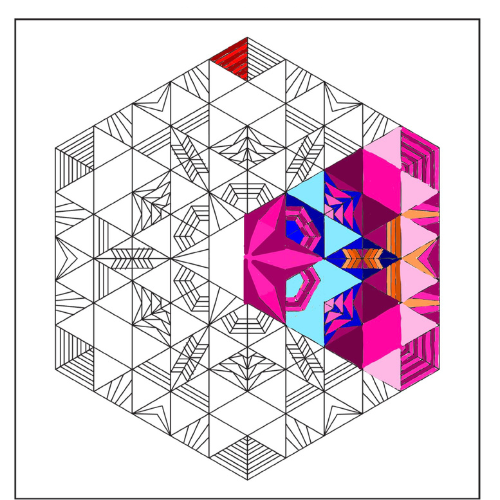
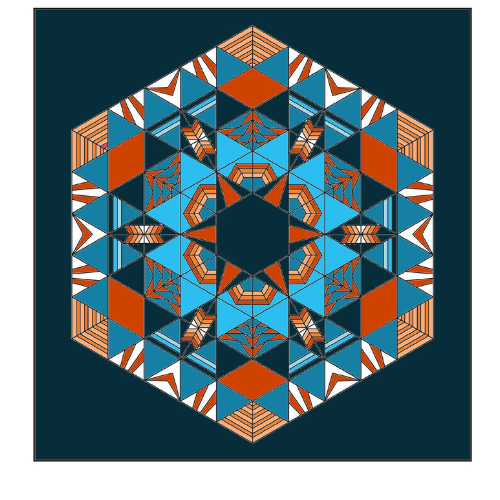
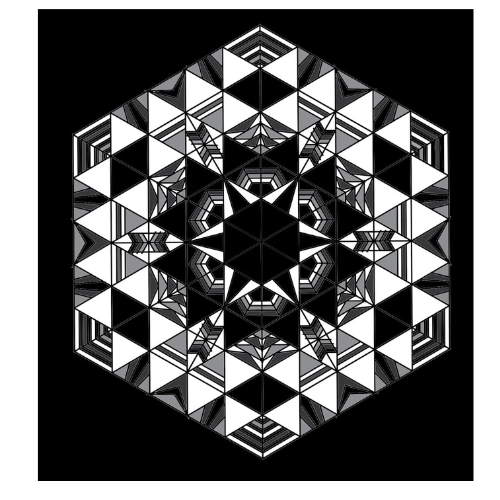
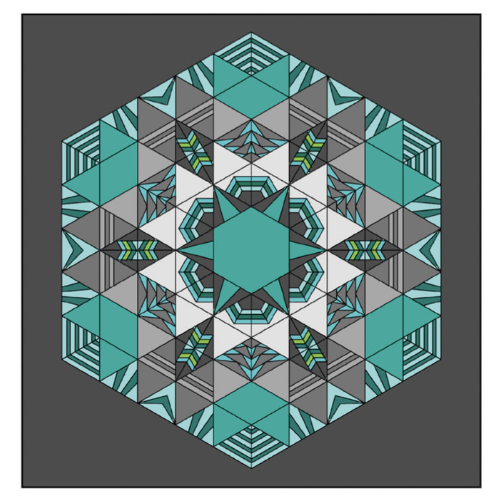
2. Make safe mistakes early during play time.
Safe mistakes are soft landings that happen during play time. You have fun, no harm done. Maybe a little time lost (but never wasted). I’ll take 100 safe mistakes versus a ho-hum quilt.
3. Become familiar with quilt patterns before cutting and sewing.
Plotting out color block by block preps you for cutting and sewing, whether you have squares, triangles or circles in the quilts. Knowing each block’s variations and placement (especially modern triangle patterns) reduces errors – you understand the design and what you want to do with it.
Choose fabrics by matching up with your chosen palette.

4. Try out quilting ideas before stitching the top.
Doodle out your ideas for quilting designs right on the page. You’ll enjoy drawing more if you enlarge a section of the page by 10 to 25 percent. Or print out a section at 400% at a copy shop for the full doodle experience.
If you mess up or try something new, all you’ve wasted is paper. Not precious fabric.
This method gives you confidence when lowering the needle into the top. You’ve tried out ideas and have a solid path forward.

When I’ve finished piecing the top, I can hardly wait to start quilting. I might get reckless with stitching.
Man, I’ve made stitchy messes! Guessing gets me nowhere. If you’ve cried real tears while ripping out tiny, meandering stitches, you know what I’m preaching.
Need ideas for a stitching plan? See my blog post on Finish a Quilt: Stitch Methods for Quilt Tops.
Having a solid plan saves so much time. You’ve done some quick trial runs without sewing a stitch with these four methods. You’ve earned the “The Good Quilter” badge (okay, a fictitious badge for now, but really, there should be one). Maybe a super cool quilted finish is the REAL badge.
Even when you hand it off to a longarm professional, they’ve got your vision.
Four ways to use a coloring sheet and everything to gain. Often, the simple things – like crayons, pencils and paper – make our best ideas come to life.
Do you have a method for using a quilt coloring page? Share in the Comments section below – I’d love to know what works for you.
SIGN UP FOR A FREE CLASS AND MODERN TRIANGLE BLOCK “OUTSHINE”
Don’t miss my free tutorial and pattern featuring a versatile modern triangle block called Outshine. Make your first freezer paper piecing block and see for yourself how easy it is. You’ll want to make a bunch. Or a whole quilt!
Click on the link here to take the free triangle class.
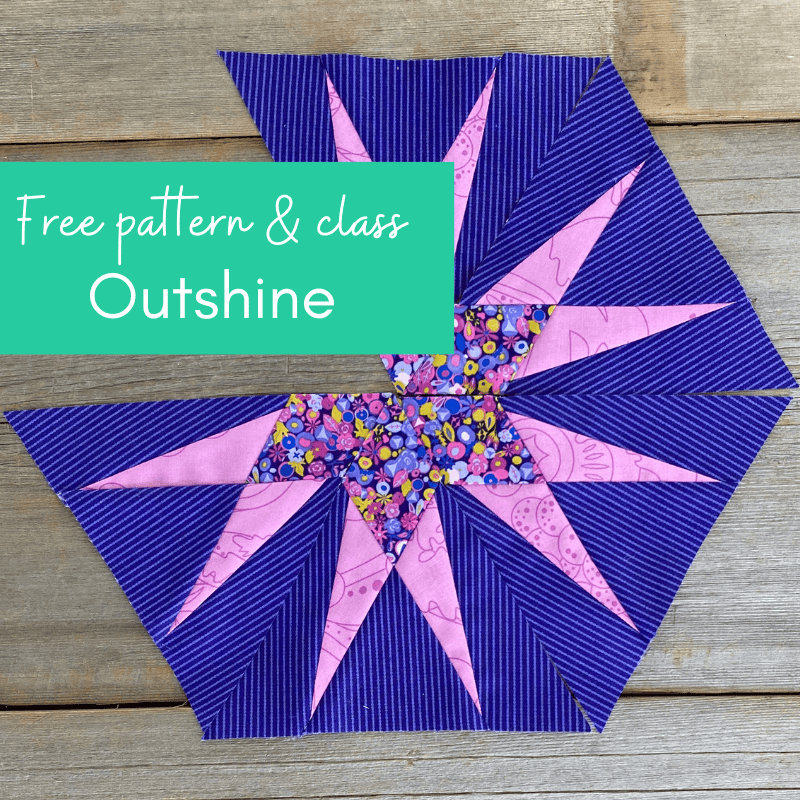

[…] how coloring pages help quilters in four ways here. Kind of amazing how crayons, paper and playing around still make […]